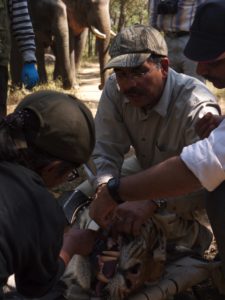Many people ask how we select projects to support, and as we are starting the process for selecting next year’s proposals, Crissie suggested this might be the topic of our latest office blog, so here goes.
It’s the end of June and the sun is shining in London and we’re about to start on the process of selecting our projects for funding in 2019. Why does it take so long you might ask? Here’s why.
We start officially with our call for “concept notes” in June. Actually, it starts earlier than that, making sure all the application documents are up-to-date with best practice. Our call isn’t open to everyone as we couldn’t cope sorting through the influx of application, but it goes out to an ever-expanding list of those who have built up a reputation for strong, effective conservation activities.
Applicants have six weeks to submit this concept note, a fancy name for what is a concise description of who they are, what they want to do, how they will do it and how this will advance the over-arching goal of the project.
To help us progress to the next stage our Project Review Group, made up of a team of experts, including representatives from ZSL and DWF whittle the number of applications down. Those who get through this stage show a clear understanding of what they want to achieve and how they are going to do it.
Those on the shortened list are asked to submit a full proposal and within six weeks we are flooded with proposals – this time with detailed methodology, tabled log-frames, maps, work timetables and much more.
It is at this stage we ask independent experts to review the proposals and associated documents. These scientists have a depth of understanding, technical ability and practical experience and they can place the proposal within the context of the wider conservation landscape.
This all takes several weeks. The experts, of course, have busy lives and are sometimes out of internet access for days, sometimes weeks at a time, whilst others might express a conflict of interest and not be able to take part.
 The reviews themselves once complete, more often than not, raise a list of questions, suggestions and alternatives which are then shared with the applicants to answer. Simple resolutions can be amended in the original document but on occasions, the whole proposal is rewritten and resubmitted. There is much toing and froing!
The reviews themselves once complete, more often than not, raise a list of questions, suggestions and alternatives which are then shared with the applicants to answer. Simple resolutions can be amended in the original document but on occasions, the whole proposal is rewritten and resubmitted. There is much toing and froing!
Finally, in the late autumn, it is the role of the Project Review Group to consider the proposals and the reviews, along with their own knowledge and a long-term understanding of the WildCats position to make recommendations and come to a decision.
It is sometimes not an easy decision to make. The proposal may be valid and well written, but it might not have a direct benefit to wild tigers and or Amur leopards. The proposal might replicate activities that have been previously unsuccessfully or simply we may not have enough money to fund all the proposals we consider. Then it is a matter of Due Diligence checked, and Grant Agreement signed and we are off!
And then it is done and five months later, it starts all over again!

